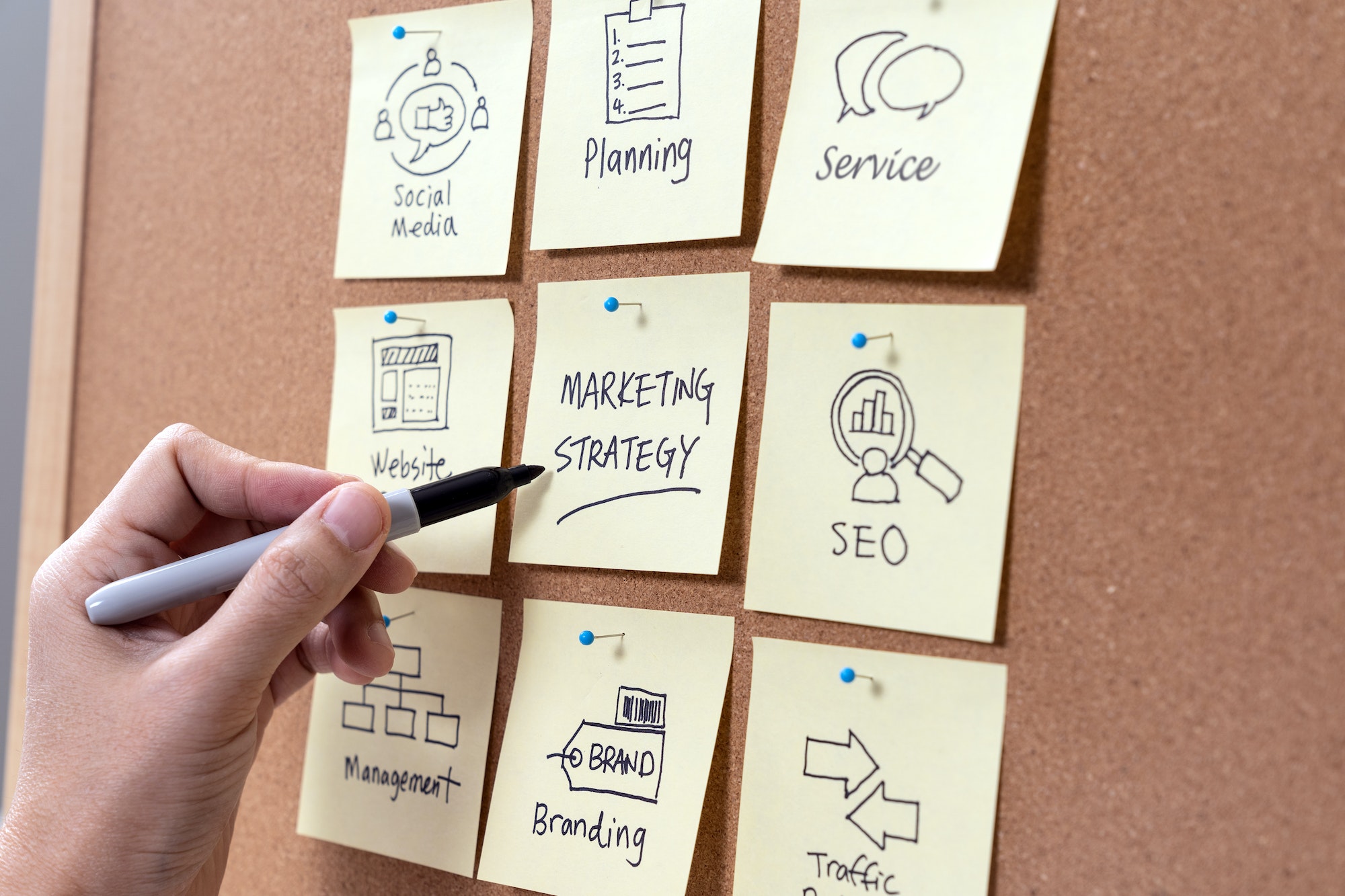Introduction
Creating demand for a product or service is a challenge that many organisations are facing, with 70% of B2B companies attempting to focus on converting leads as a marketing priority. Without the proper strategy in place, finding strong potential prospects is going to be no easy task. Demand generation involves a number of different strategies, but typically includes tactics such as generating leads for salespeople through content marketing and advertising campaigns. The long-term end goal here is to generate qualified leads that work towards increasing critical KPIs, such as conversion rate.
This guide to demand generation is going to drill down on what exactly B2B organisations need to be implementing in order to drive awareness and eventually close more sales. We will take a look at the difference between demand generation vs lead generation, why demand generation is important, and, of course, how to build a strong demand strategy.
What is Demand Generation?
Demand generation is the process of creating interest in your product or service. It’s not about converting that interest into sales—that’s the job of lead generation. Rather, demand generation is all about building a relationship with potential customers—creating awareness and establishing trust that you’ll be able to deliver on whatever it is you’re promising them.
So how do you go about building relationships? The first step is to identify who your target audience is: what kind of people are they? What do they care about? How do they behave? Are there any commonalities between them (such as location, gender, or age group)? Once you’ve got an idea of who your audience is and what their needs are, look for ways to serve those needs through content creation (articles, videos, e-books, etc) and other techniques.
Essentially, demand generation is about creating an anticipated pipeline. It should allow your audience to have access to educational information based on the sales funnel, consistently meeting their needs.
Demand Generation vs Lead Generation
As you start to explore demand generation, you may hear the term lead generation. Lead generation is a short-term strategy that focuses on quantity. It’s usually used to get as many leads as possible in the shortest amount of time and then pass those leads over to sales for follow-up. Demand generation is a longer-term strategy focused on quality. The goal of demand generation is to create an intent or interest from prospects so that they can be converted into customers later on down the line.
In short, lead generation is more focused on leads; demand generation is more focused on customers.
Why is Demand Generation important?
There are a number of reasons why demand generation is important for your B2B business.
Here are the main benefits:
- It helps you generate leads that convert in the long term.
- It builds brand awareness.
- It increases sales revenue by creating loyal customers.
- It increases customer retention rates, which means you’ll have fewer customer service issues because your customers are happy with how they’re being served by you or your product/service providers (and they’ll stick around longer).
Demand generation can also help reduce the cost of acquisition through more efficient targeting and lead nurturing. This is true, especially in highly competitive markets where it may be harder to get in front of the right decision-makers.
Demand Generation Strategy
As we have established, demand generation is the long-term process by which you identify potential customers and convert them into leads. It’s an important part of the B2B sales funnel, but it’s also just one piece of a much bigger picture.
Understanding how to build a demand generation strategy is essential for any company looking to optimise its lead generation efforts and grow its customer base. Here are some stages to consider when starting to build your own demand generation strategy:
1. Brand Awareness
As you may know, brand awareness is the first step in generating demand. If a person doesn’t know you exist, they can’t buy from you!
But what exactly is brand awareness? The term refers to the extent to which consumers recognise and are familiar with a particular brand. This can be achieved through advertising, marketing, public relations (PR), or social media.
When companies invest in these channels of communication with their target customers, they hope that those customers will become familiar with their company’s name and logo and begin to associate them with certain attributes: quality products/services; innovative solutions; customer service second-to-none; environmental consciousness—the list goes on. When prospects have this knowledge about your company at their fingertips—or even just see it when scrolling through Facebook or Instagram—they feel confident making purchasing decisions because they feel like they’ve learned everything there is to know about this business before doing business with them. Trust is also an important element to consider here, with 46% of customers admitting to paying more for brands they trust.
2. Problem Aware
The second stage, problem aware, is the perfect time to position your solution as the answer to their pain points.
In order to understand the problem, you need to know the following:
- The pain points of your customers.
- What are they looking for in a solution like yours and why is it important to them?
- How is your product or service different from what they’re currently using for that particular problem?
- Why are you the best option for them in terms of quality, price, delivery time etc?
When you understand these things about your audience and their problems (the buying cycle), you can shape content around these issues that will address their needs and drive conversions through webinars, ebooks or white papers (the buying decision process).
3. Demand Capture
Demand capture is the process of capturing, organising and tracking leads for sales opportunities. It’s an important part of your strategy because it’s one of the most effective ways to scale up your business. You can use demand capture techniques to:
- Identify new prospects and nurture relationships with them over time
- Learn about their needs and help them see how you can solve them (if they’re a good fit)
- Make sure you get in touch with your prospects when you need to (no more cold calling!)
At this final phase of the demand generation strategy, your audience should have all of the relevant information to decide that your solution is the one they need to buy.
How to Build a Demand Generation Strategy
Knowing what demand generation is about is a great start to your long-term journey, but grasping what techniques can be used to build an effective demand gen strategy is key. Here are 5 elements to consider when creating a successful strategy;
1. Content Strategy Focusing on the Sales Funnel
Content strategy is an important component of your overall marketing strategy, and plays a vital role in demand generation. In short, content strategy is a process for creating and distributing valuable, relevant, and consistent content to attract, engage, and convert prospects into leads and customers.
You may be asking yourself “why does my B2B company need its own content strategy?” The answer is simple: it provides you with the ability to create a cohesive plan for your content marketing efforts by providing your sales team with the right tools (i.e., emails) that can help them turn leads into customers.
Content strategy helps ensure that you are using the right type of information at each stage of the buying cycle so that prospects will become buyers when they’re ready without feeling overwhelmed with too much information before they’re ready.
2. Analyse Consumer Data
Once you’ve defined your B2B audience, it’s time to find out more about them. The best way to do this is by analysing consumer data that you have access to. This could include customer surveys and feedback forms, but also email communications with customers (including support tickets), social media insights, website analytics and data from content marketing activities such as webinars or eBooks.
If you don’t have access to any consumer data, then now would be an ideal time for a quick reminder: Data is one of the most valuable assets that companies can have. It’s worth investing in some market research before beginning your demand generation campaign if possible!
3. Utalise Omnichannel Marketing
There are many channels to use in your demand generation strategy. But how do you decide which ones to use?
It all comes down to your target audience and where they’re spending their time online. If they don’t spend any time on social media and aren’t active email subscribers, then stop wasting your time trying to reach them through those channels!
Instead, focus on the channels that are more relevant for your prospects at each stage in their journey with you. For example: if someone is doing research before getting engaged with your company, send them content via webinars or videos. Once they start engaging with sales teams (or even better – becoming a customer), start using email marketing campaigns extensively as well as continuing with content like case studies or whitepapers from previous interactions.
4. User Experience
If a B2B buyer is going to spend time on your site, you want them to have a good user experience. The better the content is, the more likely they will be to engage and convert. To ensure your UX is strong, here are some points to consider for your website;
- Make content easy to find and easy to read
- Use descriptive headlines that are relevant to the reader when deciding which information they want. This will help users identify what they need quickly so they don’t waste time looking elsewhere or losing interest.
- Break up large blocks of text into short paragraphs with subheadings so readers can take in information easily, especially if it is lengthy or complex content such as an article or blog post that requires reading from beginning to end (don’t forget about those CTAs).
- Use call-to-action buttons
- An effective CTA button should be obvious within the web page layout without being too distracting from other parts of your design (for example, text links rather than images). If possible try using colours that contrast with other parts of your design so users can easily spot them in any size (such as red). Try using different colours for each type of callout including social media icons like Facebook/Twitter buttons which may otherwise blend in too much with other elements on your website design such as menus!
5. Nurture High-Quality Leads
The process of creating and fostering relationships with customers at each level of the sales funnel is known as lead nurturing. Currently, 51% of marketers are prioritising lead nurturing segmentation when building campaigns, and with good reason.
As you’re nurturing leads, it’s important to remember that email and social media are most likely your best tools. You can use them to send emails that are relevant to the lead’s interests and needs, as well as engage them on social media platforms related to your business and industry. This could include hosting live chats, posting useful content such as articles or videos on Twitter and Facebook, responding to comments in real-time, or sharing industry news on LinkedIn.
If a lead doesn’t respond within a certain period of time (this will vary depending on the channel), move them into another stage of your sales funnel where they’ll receive more focused attention from sales reps or other experts at the company. You may want to hold off contacting them until you’ve reached out a few times over multiple channels. If this is the case then using an automated email program like Smarketing Cloud is helpful for keeping track of who has been contacted, and how many times within which stage of their buyer journey. This ensures there aren’t any gaps between now and when you do decide they’re ready for further engagement with someone familiar with what makes each individual customer tick based on what has worked best previously.
Conclusion
There is no doubt that demand generation is a powerful tool for B2B marketers to use. It can help your brand get noticed by new customers, increase sales and ultimately generate more revenue. The key to this success lies in having an effective strategy which will enable you to reach out to potential buyers using multiple channels while also providing them with valuable content that they need before making any purchase decision. If you are unsure where to begin with demand generation, why not hand over the heavy lifting to Smarketing Cloud’s demand gen experts!?
We take attention to detail to the next level, as we drill down into your exact ideal customers and learn how to target them through data analysis and utilising the latest demand gen tools. Schedule a call today!










